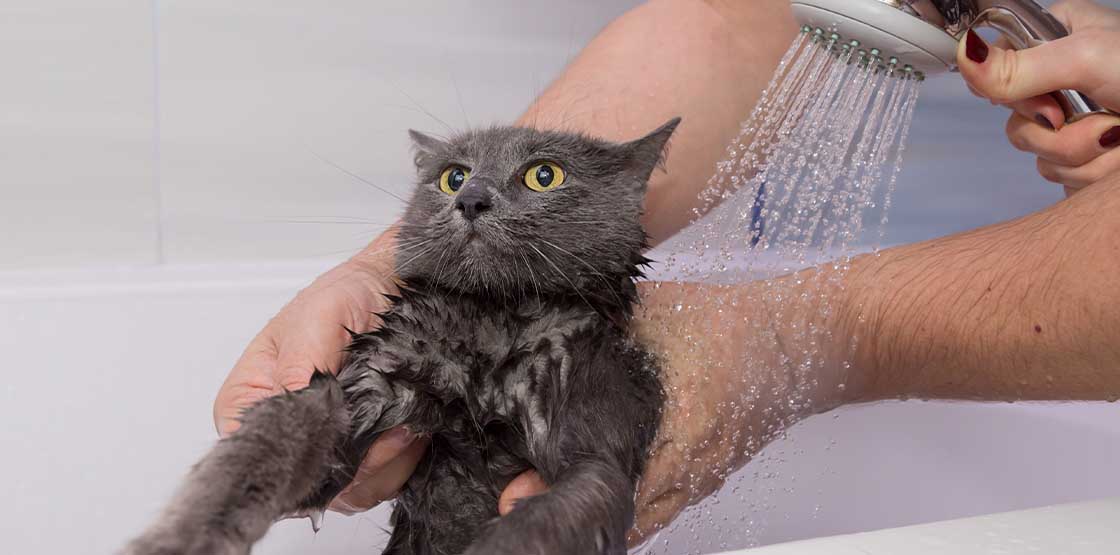Do Cats Need Baths?
Do cats need baths? Well, cats are pretty good at keeping themselves clean, but there are times when they need a little help with their personal hygiene. Now, the thought of bathing a cat might fill you with horror, but with a bit of preparation and by following our tips, it can be a stress-free experience for you both.
Why Bathing a Cat Is Important
Most cats love to cuddle up to their family member and enjoy the comfort of a good home. That means we really need them to be clean before they sprawl out on our beds and sofas. When answering "do cats need baths?", there are also several other reasons as to why you might be contemplating a wash down for your feline:
- They may roll in really stinky stuff. Cats love to roll around on the ground, and that can mean that their coats get covered in debris that you really do not want in the home.
- Occasionally there can be a mistime at the litter box which means that your feline friend needs a washdown.
- Skin infections and parasites may result in your vet prescribing shampoos to get everything back under control.
- There might also be other medical conditions that make it difficult for your cat to reach all parts of their body to keep clean. For example, older cats with arthritis can find it really difficult.
- Hairless breeds such as the Sphynx and Peterbald need to be bathed to reduce the build-up of oil on their skin.
- If your cat is carrying a little too much weight, then they may struggle to be able to reach everywhere to keep it spotlessly clean.
How Often Do I Need to Bathe My Cat?
While we answer "do cats need baths?" we also answer how often you should clean your furry friend. This really does vary from cat to cat. For the stinker who has rolled in something totally gross, then it might be a one-off. But, for the hairless cat, they will need bathing every week as they lack the coat to absorb the naturally occurring oils in the skin.
Don’t forget that you might not need to do a complete bath. If it is just a small area of the coat that needs attention, then you may get away with a damp flannel just to clean that patch. Cat wet wipes can be another savior. These disposable damp cloths are specially designed to not irritate your cats’ skin, and they are perfect for a litter tray mishap.
Tips for Stress-Free Feline Baths
Getting Prepared
There will be times when a damp flannel or wet-wipe just won’t cut it, and that is when you will need to get prepared to give your cat a full bath. Preparation is key to this; having everything you need on hand will really remove some of the challenges. So, you will need:
- A large plastic bucket, sink, or a bath which has a non-slip rubber mat in place.
- Specialist cat or kitten shampoo. Please do not use your own as it is likely to be much too harsh for your cat’s skin and hair.
- Some delicious cat treats.
- Two towels.
- A brush to help remove any debris or knots.
- If possible, a friend to help!
You May Also Like:
Related Search Topics (Ads):
Our Step-by-Step Guide
Do try to keep everything as calm and steady as possible. If you are stressed, then your cat will pick up on it and become more anxious themselves.
- When you are ready to get going, bring your cat into the bathroom and close the door. Pop some of the tasty treats on the floor so that you can get organized while they happily munch away.
- Now, fill the cat bath with warm water (not too hot) so that it is deep enough to go no further than halfway up to your cat’s legs; anymore and it is likely to cause your cat to panic as they get lowered in.
- If you are by yourself, try to hold your cats head with one hand and then gently trickle water over their body. If you have a friend helping, they can gently hold your cat and offer more treats while you get on with the bathing.
- Now, apply a small amount of shampoo and gently lather up with water. Do try to avoid getting their head wet as this is the area that is likely to cause the biggest reaction from your cat. If you are using a medicated shampoo which needs a few minutes on the skin before it is rinsed off, you might find it easier to lift your cat out of the water and place them on a towel while you wait for it to take action.
- Once you are ready to rinse them off, use the shower nozzle or pour over a jug of warm, clean water to get rid of all the lather. Again, remember to shield your cat’s head and face so that water does not get into their ears and eyes.
- Finally, you can lift your cat out and gently wrap them up in a towel to dry off.
- Do keep your cat inside until they are completely dry; this is especially important in cold weather.
How to Avoid Scratches
When your cat is scared, they may lash out and try to scratch or bite you. They may also accidentally catch you with their nails if they are trying to scrabble out of the bathwater.
This is the time to keep calm and gently hold your cat until they calm down; getting cross is likely to make the situation a whole lot worse. Sometimes though, a cat can be so challenging to manage that it might be a good idea to chat with your vet about the problem. They may be able to offer the service for you or recommend a groomer who is experienced with bathing nervous cats.

